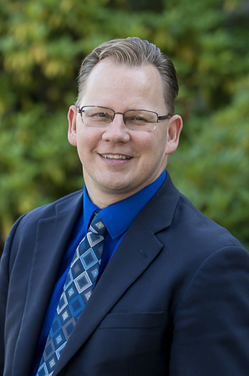 OLYMPIA—December 13, 2018—For the second consecutive year, Washington has the most new National Board Certified Teachers (NBCTs) of any state. National Board certification is the highest and most rigorous certification process for teaching in the nation.
“Congratulations to all of our new NBCTs,” said Chris Reykdal, Superintendent of Public Instruction. “The hard work, determination, and relentless self-reflection it took to get to this point is a major accomplishment. We are delighted to again welcome the largest class of new NBCTs in the country.”
Washington consistently ranks among the top in the country on other NBCT figures:
- Number of new NBCTs: 854 (national rank: 1st)
- Number of renewed certificates: 775 (national rank: 2nd)
- Total NBCTs: 10,859 (national rank: 3rd)
- Percentage of teachers who are NBCTs: 18.74 percent (national rank: 2nd)
- Percentage of NBCTs employed in Washington school districts: approximately 88 percent
“Each year we see more and more of our teachers successfully become a NBCT. Great teaching leads to great outcomes for our students and we’re proud of each of these educators for completing such a rigorous process,” said Governor Jay Inslee. “I applaud our NBCTs for their determination and hard work.”
Washington's National Board Network Partners
Teachers pursuing National Board Certification benefit from a statewide National Board network, including the Office of Superintendent of Public Instruction (OSPI), the Washington Education Association (WEA), and the Center for Strengthening the Teaching Profession (CSTP). The partnership focuses on ensuring candidates across the state have access to support and professional development opportunities related to National Board Certification.
“Our teachers continue to impress the nation with their determination and passion for creating the best learning environment possible for their students,” said Kim Mead, President of the WEA. “WEA plays an important role in supporting members who are working toward their National Board Certification with high-quality training and peer support. Congratulations to all of our NBCTs – we are so proud of you.”
“I continue to be amazed and appreciative of all the teachers in Washington who have achieved, renewed, and who are in pursuit of National Board Certification,” said Nasue Nishida, Executive Director of CSTP. “We are thrilled to have the most newly certified teachers in the nation who have demonstrated their effectiveness with students and their learning.”
Better Learning for Students
As results came out, newly certified educators took the chance to reflect on the lasting impact of the National Board process.
“I had to retrain my brain to think differently,” said Sonia Jauregui, a second grade teacher at Robertson Elementary in the Yakima School District. “I had to dig deeper to examine my knowledge and personal biases that were interfering with my students’ and my professional growth. It was literally painful. It was like learning to speak another language,” she continued. “This process will continue to influence me for the rest of my life.”
Robertson Elementary is considered a “challenging” school, with more than one-quarter of the students being English learners, and roughly three-quarters of students receiving free and reduced price-lunch. Jauregui, who achieved certification in the area of Early and Middle Childhood Literacy, was once an English learner herself. “I went back to school to get an education to help kids like myself. I wanted to help instill the love for learning and literacy that helped me cultivate a hope for a better tomorrow,” she explained.
One of the biggest takeaways from the process for Jauregui included analyzing students’ individual needs and adapting instruction accordingly. “Effective instruction is not just following the curriculum to ‘fidelity;’ it is designing differentiated instruction based on specific student goals,” she stated.
Building a Robust Program
State initiatives and local involvement allow both growth in candidates and retention of NBCTs, ensuring each student has access to accomplished teaching.
The Legislature awards NBCTs a base bonus each year. In 2019, NBCTs will receive a base bonus of $5,397. Teachers with their National Board Certification can receive an additional bonus of up to $5,000 if they teach in schools with a certain threshold of low-income/high-poverty populations.
Legislation also provides a conditional loan for candidates pursuing certification, which covers the cost of three components.
Many school districts, educational organizations, and associations have integrated local support that is instrumental in candidate success. As they move through the process, NBCT candidates receive support in cohorts from 445 trained facilitators and regional coordinators working in each area of the state. In addition, districts frequently choose to offer incentives that help foster their own NBCT communities.
About Board Certification
Created in 1987 and implemented in Washington in 1994, the National Board for Professional Teaching Standards is an independent, nonpartisan, and nonprofit organization devoted to advancing the quality of teaching and learning. The National Board Standards define what accomplished teachers should know and be able to do in 25 certificate areas across different subject areas and developmental levels.
Certification consists of four components:
- An assessment of the teacher’s content knowledge.
- A portfolio showing work students have done and the teacher’s feedback to the student.
- Two videos of the teacher in the classroom, showing lessons taught and the interaction with and among students.
- A portfolio of “reflective” work: what the teacher does outside the classroom that translates in the classroom.
For More Information:
|